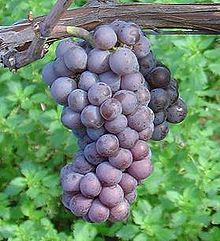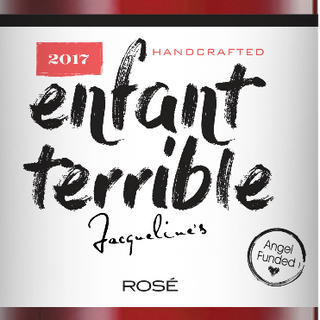2017 Enfant Terrible ‘Jacqueline’ Rosé - Part 3
- James-Paul Marin / Enfant Terrible
- Sep 28, 2017
- 3 min read
2017 is simply my finest vintage ever! On February the 18th during the hustle and bustle of vintage, I welcomed my daughter Jacqueline Francesca Marin into this world. To commemorate the happiest day of my life, I have named the first of my 2017 released wine after her; The Enfant Terrible ‘Jacqueline’ Rosé.
Now that I have filled your head with traditional Rosé winemaking techniques and grape varieties, you can disregard all I have mentioned, as I now explore the unconventional path.
The Jacqueline Rosé is stylistic, similar in nature to Champagne where each bottle tastes the same (House Style) irrespective of vintage variation. My Rosé style is best described as dry, elegant and floral with a pale pink or crimson colour. The best way to achieve a stylistic wine is make it from a blend of varieties and regions and different vintages like the best Champagnes of the world.
So let me start by pulling the curtain back and examining the final blend’s composition. After 101 different interactions, the final blend was Pinot Grigio 87% / Pinot Noir 8% / Chardonnay 5%.
Pinot Grigio is the backbone of this wine, why?
Few realise that Pinot Grigio is grayish-blue to brownish pink in appearance, not white like Chardonnay or Sauvignon Blanc. This perfectly lends itself to skin contact and the dry Rosé wine style.
Red fruit grown for the purpose of red table wines and ‘bleeding off’ the juice to make a Rosé, produces a dark coloured juice low in natural acidity and too high in sugar. Once fermented this results in a high alcohol Rosé that isn’t delicate with a dark purple colour and typically high residual sugar. Everything my Rosé isn’t!
The Italian’s in the north of Italy made all their Pinot Grigio wine as Rosé until the mid-80’s. Once the desired colour (pale pink / copper) and flavour (palate weight, phenolics and tannins) have been extracted using the skin contact method, the grapes are pressed and the juice is fermented dry (<2g/l residual sugar) like a traditional white. This results in a dry Pinot Grigio white wine with an extra layer of depth and complexity.
Pinot Noir is the elegance and floral flavour of this wine, why?
Young wines made from Pinot Noir tend to be floral and have red fruit aromas of cherries, raspberries and strawberries. When the juice is collected via the Saignée or the ‘bleeding’ method as a by-product of premium Pinot Noir, it also has a bright purple hue and is low in tannins, perfect as a blending component to mask the copper hue from using 100% Pinot Grigio juice. It also fixes the colour dilution caused by adding 5% Chardonnay to the final blend.
Chardonnay is the texture of this wine, why?
Ripe Chardonnay that has been fermented in oak has a strong pineapple and banana flavour (esters), with a generous rich mouthful. When a small amount is back blended into the final Pinot Grigio / Pinot Noir Rosé blend it adds body and a fuller finish (slightly less acidic) building a simple unidimensional wine into something more interesting.
Now that the mystic of Rosé winemaking has been demystified, enjoy my unconventional Jacqueline’s Rosé for what it is; a dry, elegant and floral Rosé with a crimson colour that is perfect on hot summer days.
Please share or leave your questions and comments below and follow me if you wish to keep up to date with my latest wine ramblings.
Enjoy the Unconventional, -JP






Comments